By exploring Minoan civilization, exhibition aims to build mutual respect and trust, Wang Kaihao reports.
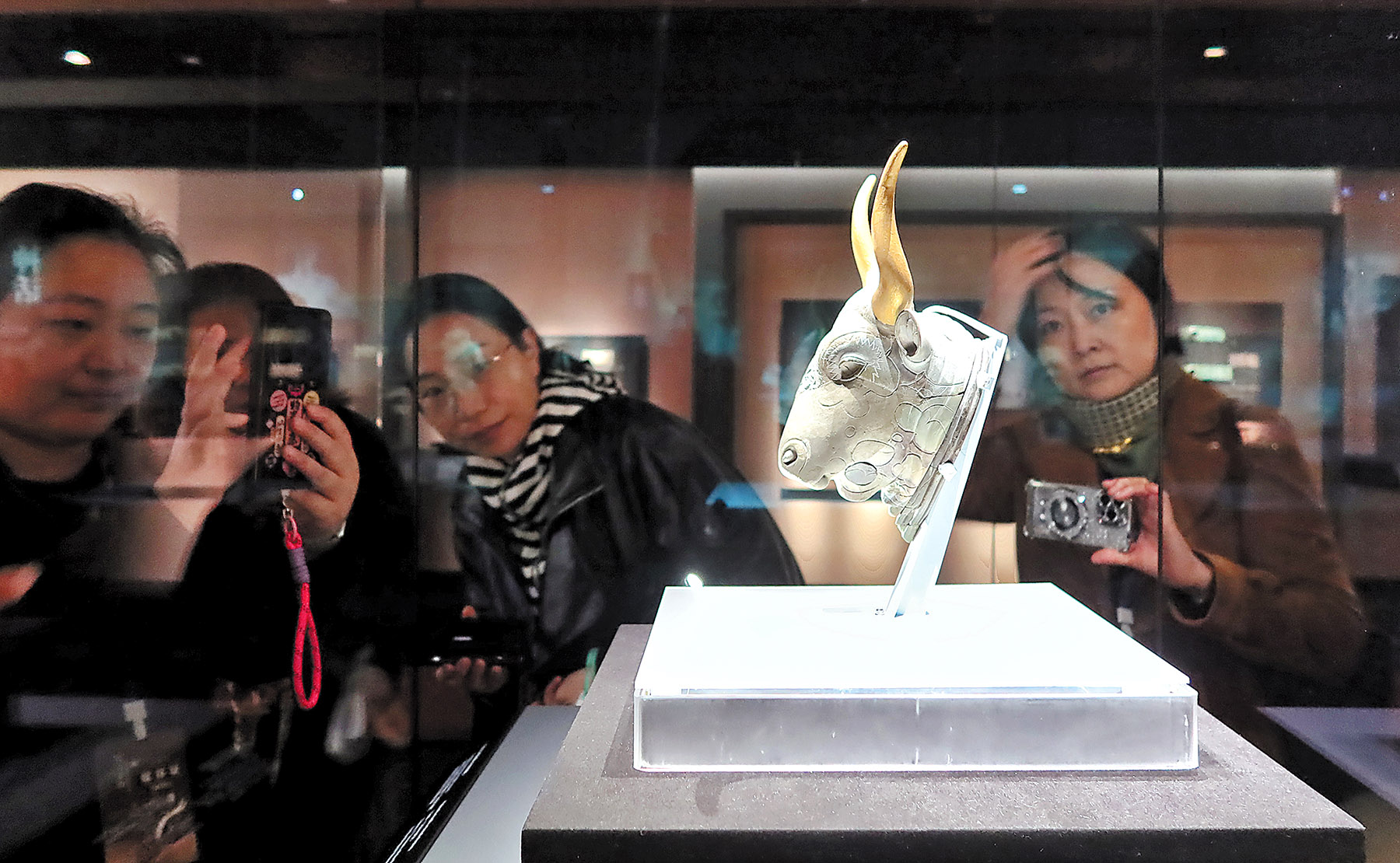
In Crete, the birthplace of the Greek god Zeus, legendary architect Daedalus was inspired to create a labyrinth beside the rolling waves of the Aegean Sea.
In Greek mythology, Daedalus was commissioned by King Minos to build the labyrinth to imprison the Minotaur, a terrible beast with a bull head. When Athenian hero Theseus penetrated the labyrinth and vanquished the beast, he also elevated the Daedalus myth to an everlasting classic of Western culture.
Mythology has driven archaeologists to shatter the hard walls of time and bring long-lost ruins back to life. Some of these artifacts are on display in Beijing at the Shenwumen (the gate of divine prowess) Gallery of the Palace Museum, and, coincidentally, demonstrate Daedalus' miracles.
READ MORE: Egypt unveils treasures at ancient site
In collaboration with the Heraklion Archaeological Museum in Crete, the Palace Museum is presenting the exhibition Daedalus: Legends of Crete, a display of 172 ancient artifacts from the collection of the Greek museum. It will run through July 27.
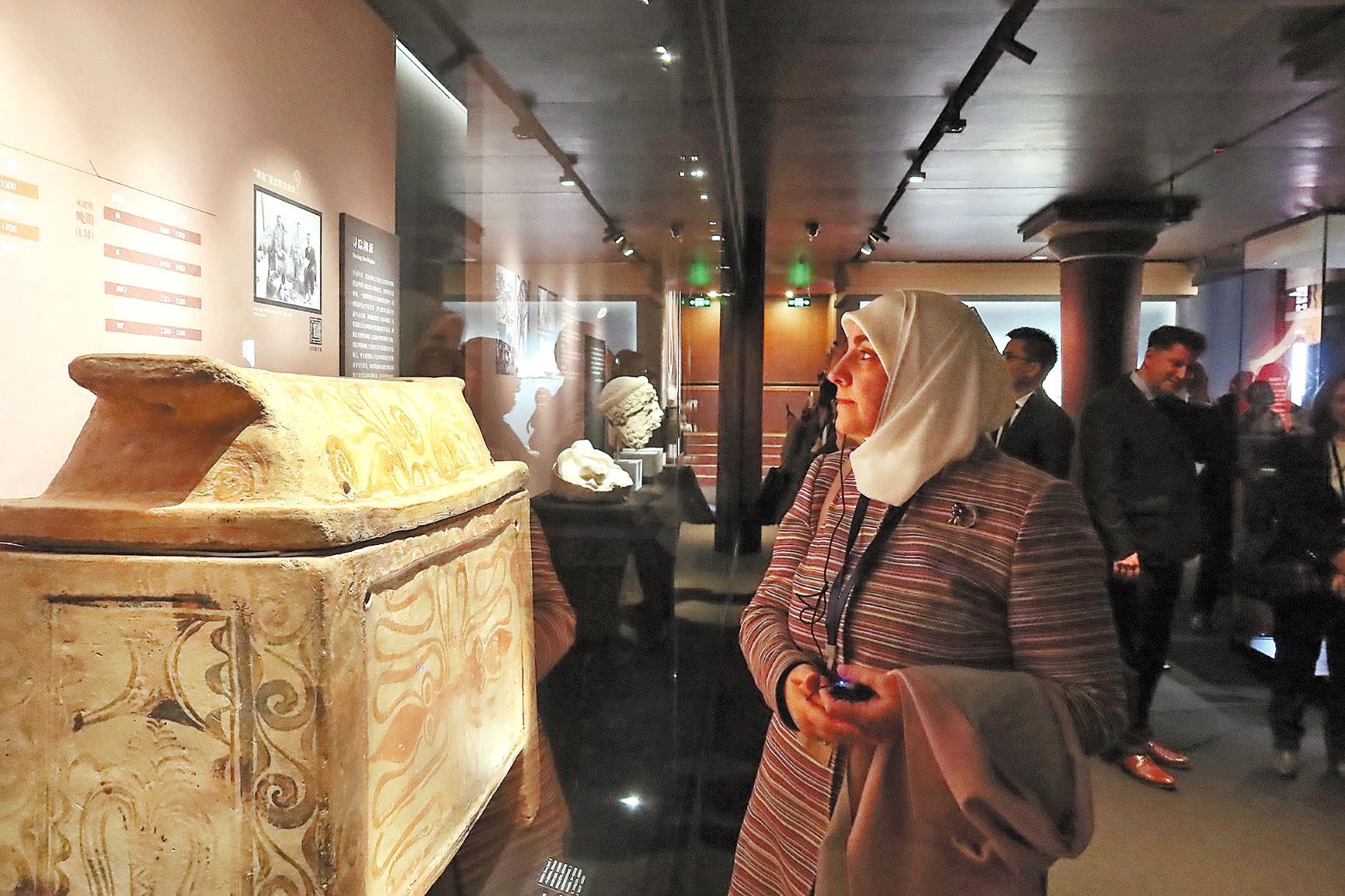
Painted pottery, bronze ware, gold ornaments, architectural fragments, and other artifacts take visitors back to Minoan civilization (c.3000 to 1100 BC). It is the first thematic exhibition focusing on this civilization, which lies at the roots of ancient Greece, ever held in China, though the Classical Age and other historical Greek periods have been the focus of many exhibitions across China.
"The public may not be familiar with the Minoan civilization," says Bo Haikun, curator of the exhibition at the Palace Museum. "Through a mixture of mythology and physical archaeological evidence, we unroll a broad view of Minoan civilization.
"Museum visitors nowadays are no longer satisfied chasing after 'stars' from abroad. Lesser-known but key historical indicators also tell appealing stories," he says.
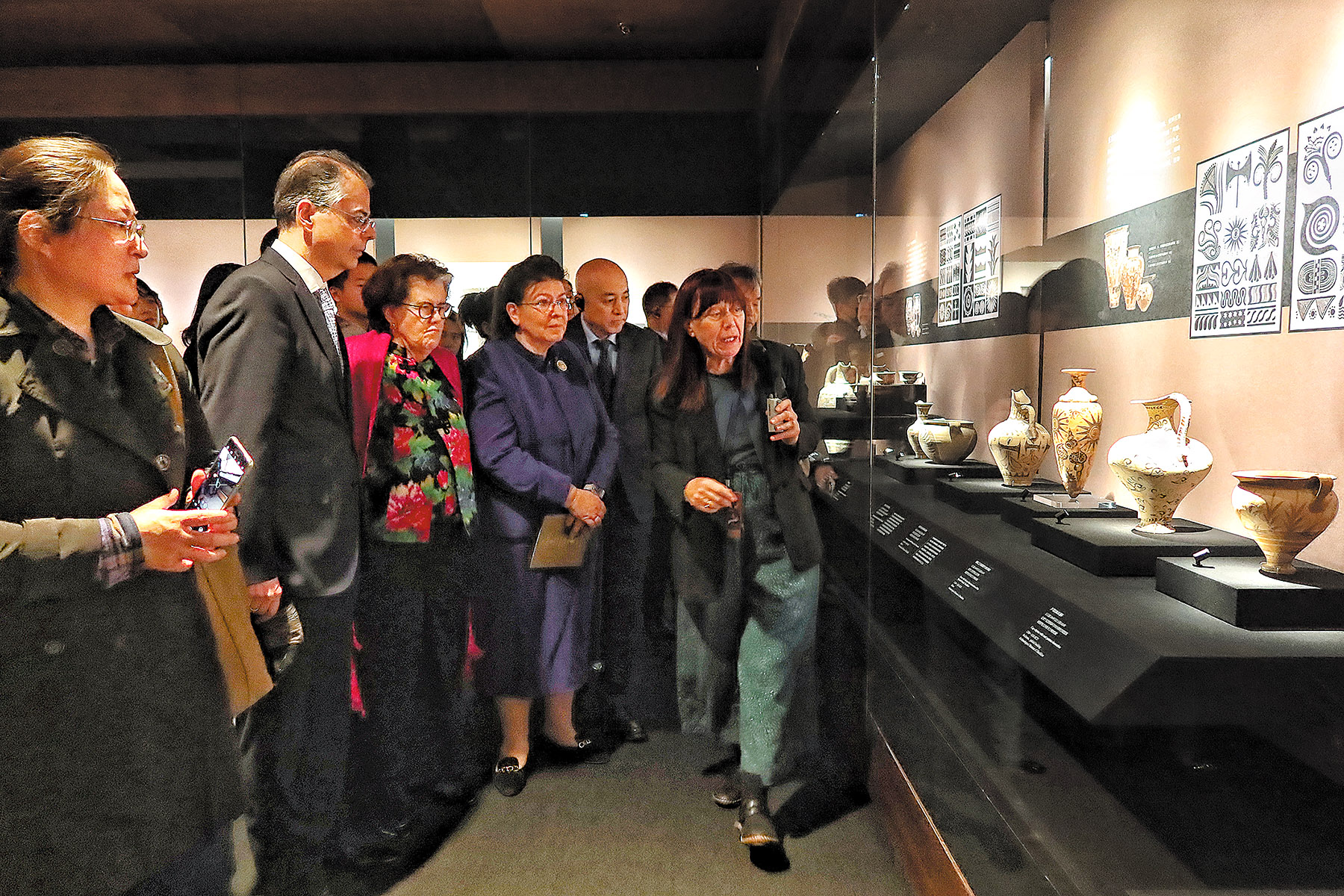
A chlorite bull-headed rhyton dating to 1500 to 1450 BC is displayed near the gallery entrance and serves as a guide into the Minoan world. The intricately carved vessel was used to hold sacrificial wine.
According to Bo, images of similar vessels are found in the frescoes of ancient Egyptian Pharaonic tombs of the time, indicating that the bull-headed rhyton was given by rulers of Crete as a kind of gift.
A special royal flask with marine patterns of special palatial tradition from between 1500 and 1450 BC is a hymn to the ocean, and a symbol of the peak of Minoan pottery art. A clay boat model from 2600 to 2300 BC illustrates the tradition of shipbuilding at the time. Sailboats were introduced to Crete when the Bronze Age came to an end. Before that, this canoe-like boat was the main way for the island to connect with the rest of the world.
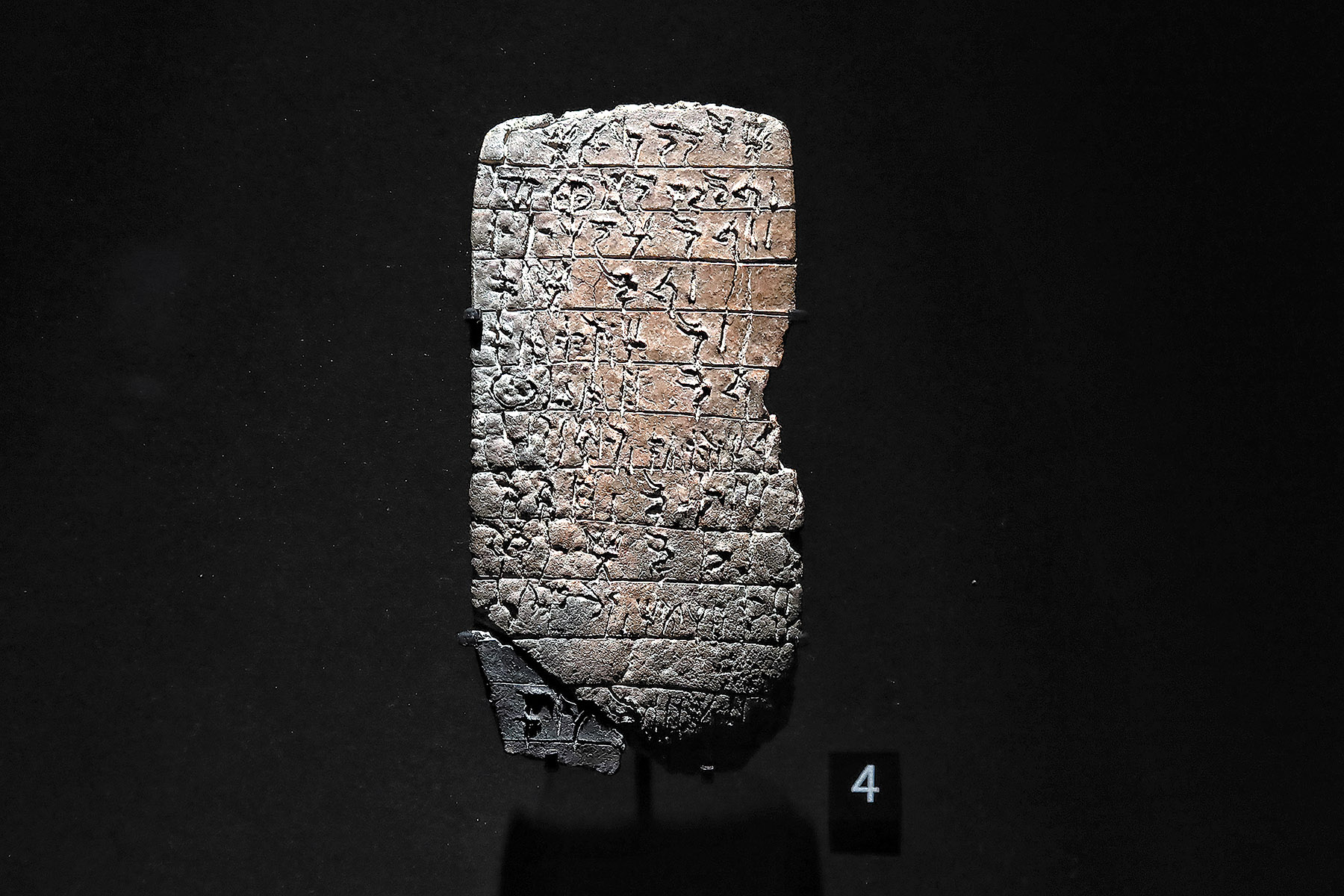
Traveling across the Aegean on simple ships, Minoans had a wide network of communication, absorbing elements from other civilizations, as the exhibition shows. Their culture also spread across neighboring islands.
"It inspires us to evaluate the shared community of mankind in a modern context," Bo says.
Other artifacts demonstrate a kaleidoscope of facets of the everyday life of the Minoans. Decorations on a gold signet ring show a typical sacrificial scene of a priestess in the center. A clay figurine vividly portrays a pregnant woman, who instinctively protects her belly. A bronze mattock also reveals farming life in the royal palace.
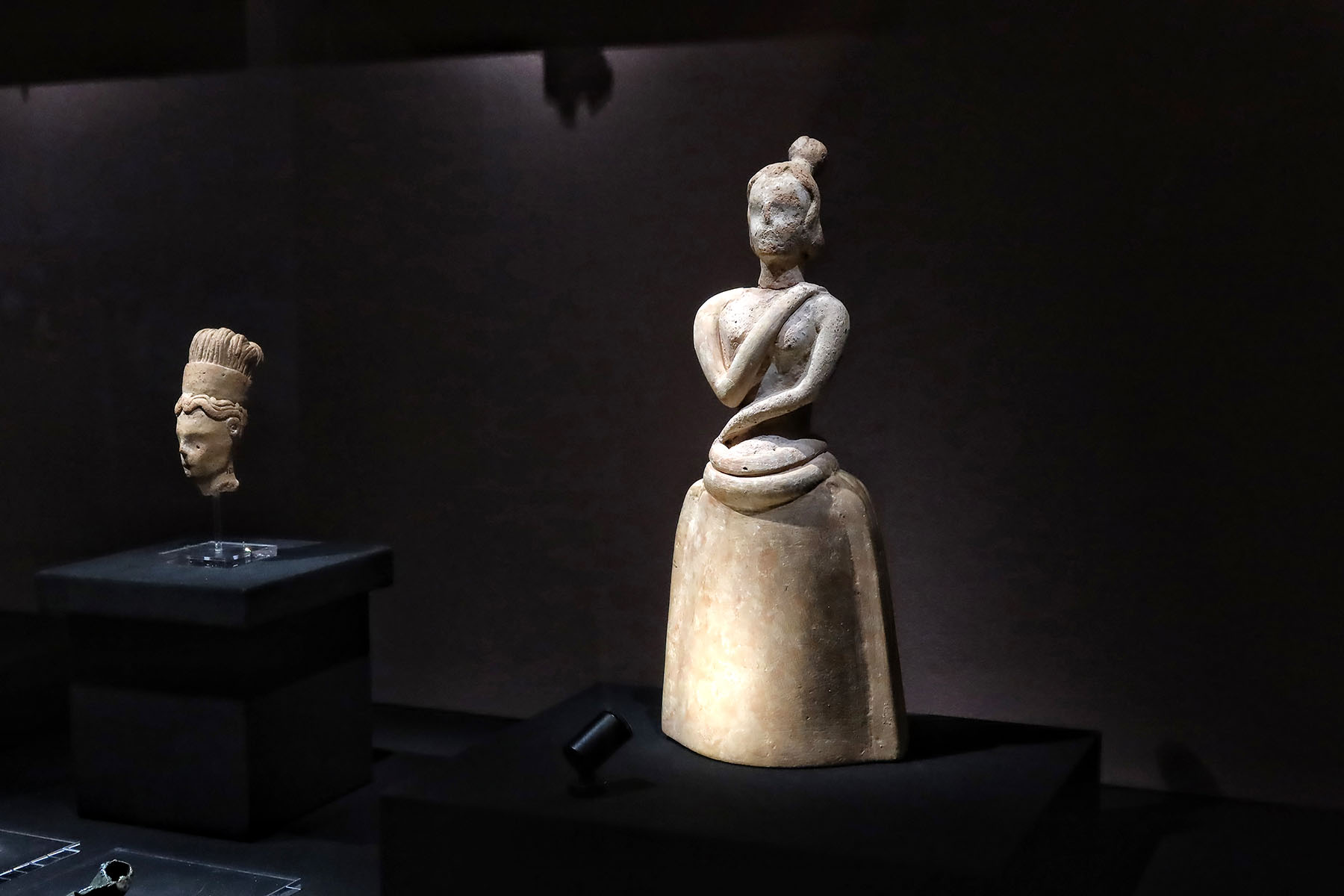
According to the Homeric epics, if he actually existed, King Minos may have lived in the 15th century BC.However, modern carbon dating results show that the Palace of Knossos, which might have inspired the mythical labyrinth described in the tales of Daedalus, existed 500 years prior.
Archaeologists speculate that the deified architect Daedalus was an artisan who participated in restoring the palace centuries later, rather than the man who first created the wonder.
Nevertheless, it may not matter.
A line in the exhibition says: "When myths are no longer confined to the realm of fantasy, they become keys to unlock the treasure chest of history."
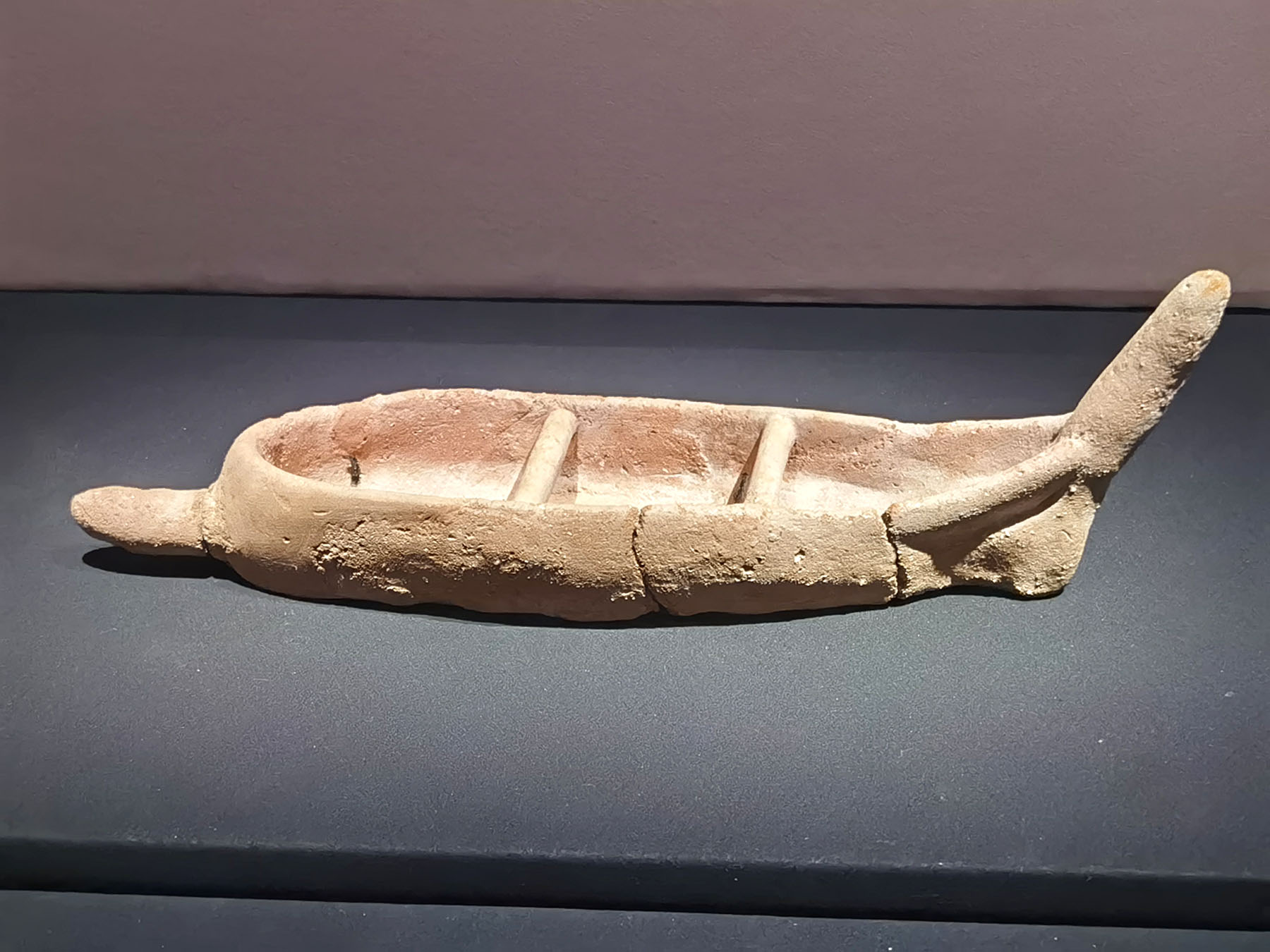
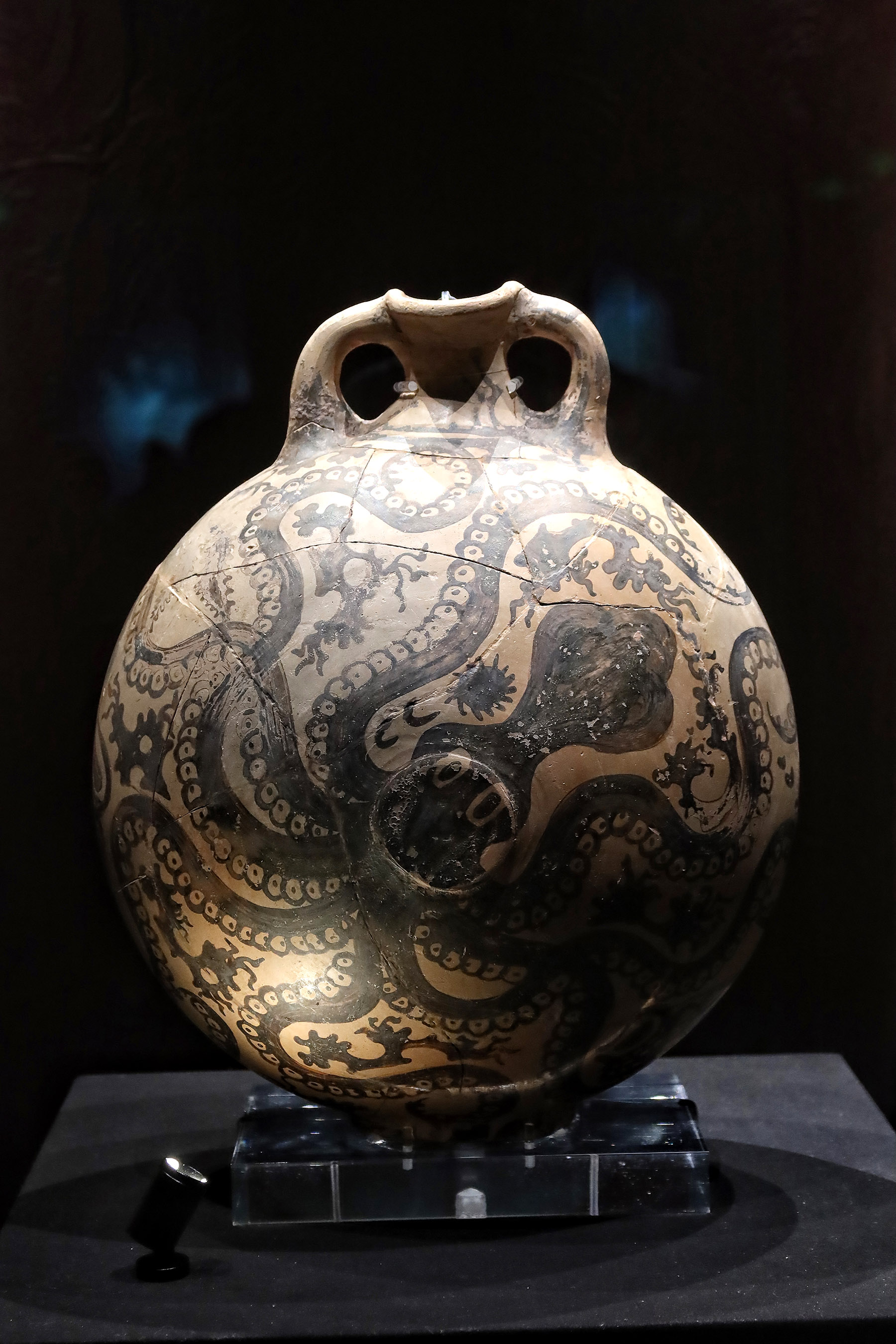
For the exhibition, Bo also prepared a surprise by the gallery exit. Thirteen Chinese artifacts from roughly the same period of Minoan civilization, ranging from jade and bronze vessels to painted pottery from the Palace Museum's collection, are on display.
"They demonstrate neither the cultural diffusion nor shared technological origins (between China and Greece)," Bo says, "but reveal the spiritual resonance of human beings at similar stages of development.
"Civilizations, agrarian or maritime, may follow distinct historical trajectories, and they jointly compose human's early symphony through the worship of nature, technical innovation, and the establishment of the social order," he says.
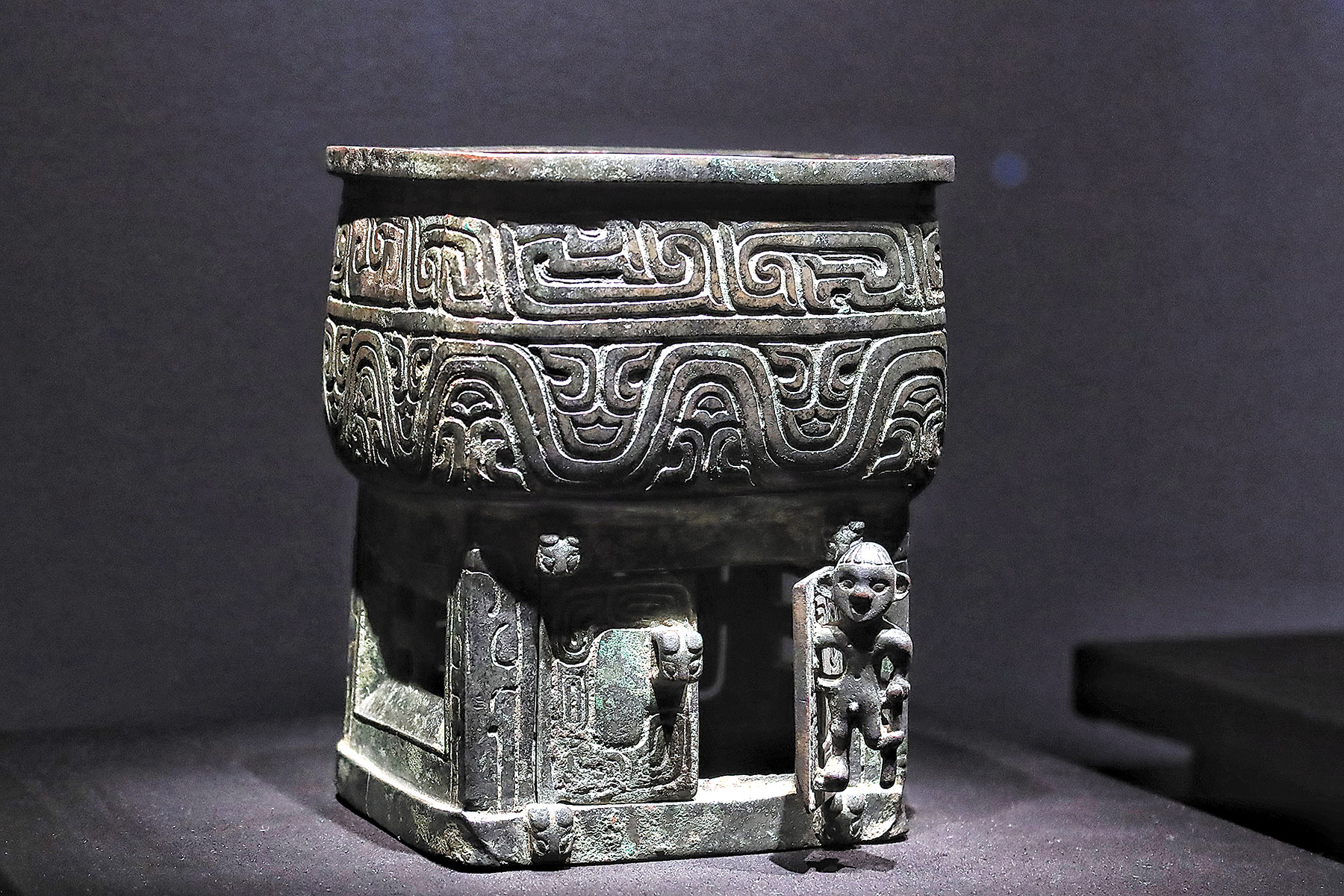
"Daedalus, the mythical craftsman … represents, as his name allows, artistic and technological advancement, creativity and innovation," said the Ambassador of Greece to China Evgenios Kalpyris at the opening ceremony of the exhibition on Monday. "These are not just Greek characteristics. They are universal."
ALSO READ: Glimpses of the past link us to the future
A series of related public lectures and educational programs will be available during the exhibition to further stir the public's interest in ancient civilizations from the rest of the world, and also serve as a celebration of the Palace Museum's centennial anniversary this year.
"Promoting dialogue among civilizations is the only way to deepen international cooperation," says Stella Chryssoulaki, general director of the Archaeological Museum of Heraklion. "To this end, museums are transforming from inward-looking institutions to outward-looking, multifaceted organizations. They become fora for mutual respect and trust among countries with different backgrounds."
Contact the writer at wangkaihao@chinadaily.com.cn


